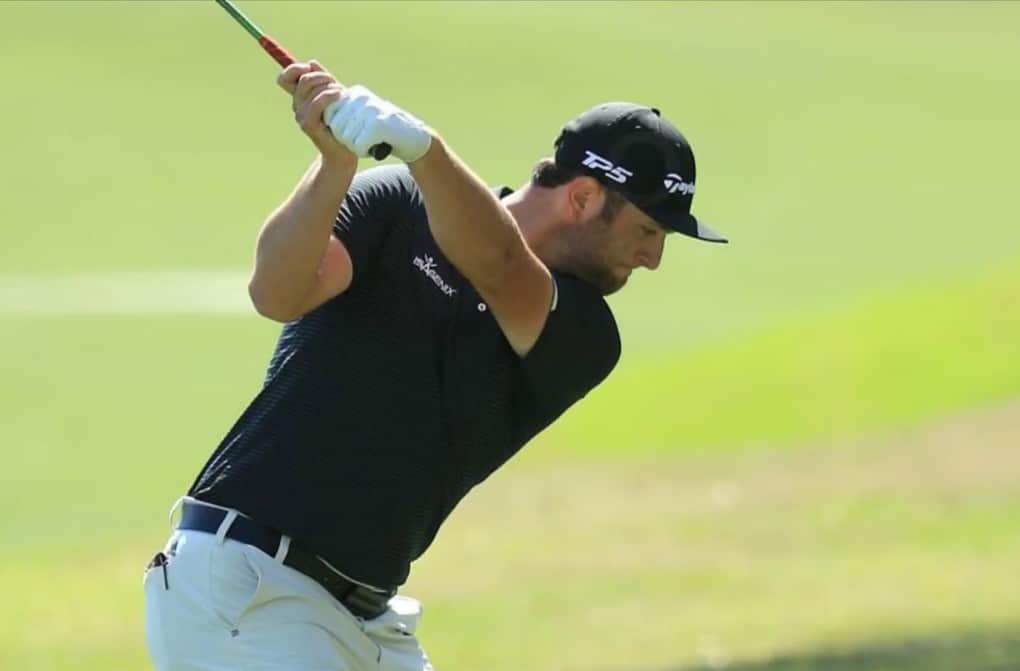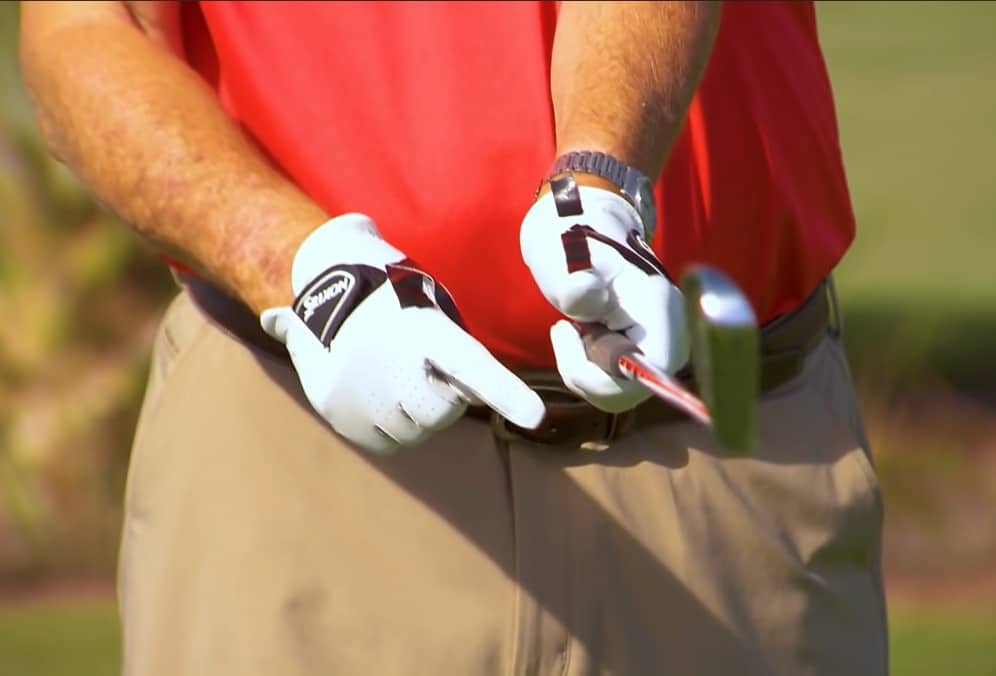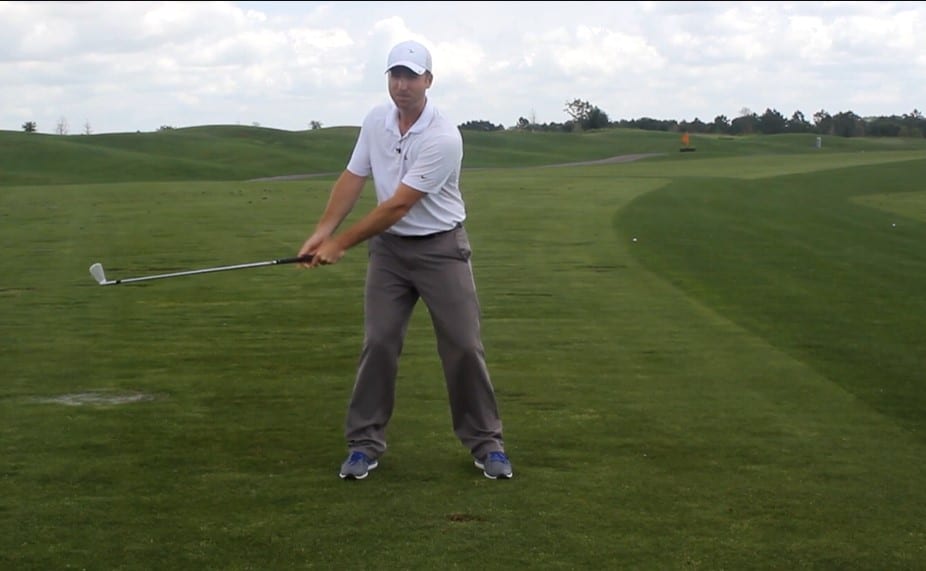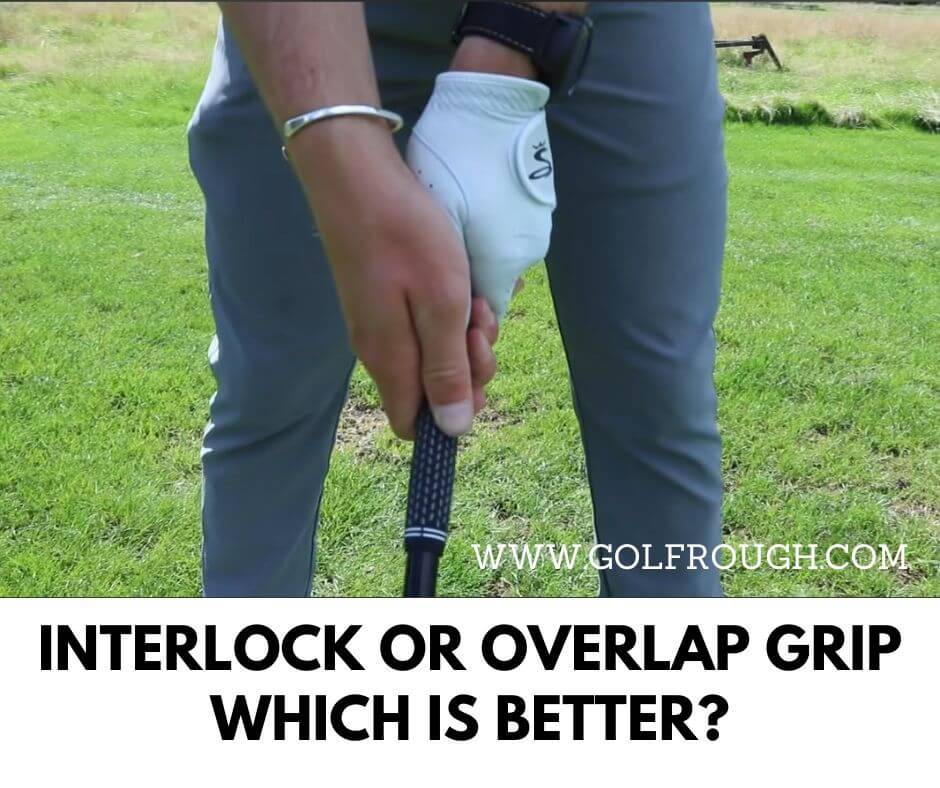Interlock or overlap grip? Which gripping technique do you prefer?
What we do know is that the interlocking golf grip is for golfers with smaller hands, while the overlapping grip is better for larger hands.
We prefer the interlocking golf grip. It never slips, even though your hands are wet with sweat. It is also better for a medium-built guy. But most of all, an interlocking grip does not put so much pressure on holding the club during swings.
But beginners and amateurs should know more about overlapping vs. interlocking grip. It seems you are bound for a game improvement once you know their pros & cons.
Interlock or Overlap Grip: Which Is Better?
Picking a gripping technique you can always rely on during intense games is probably better than using varying gripping styles. When comparing overlapping vs. interlocking grip: several factors should be considered.
Here are their comparisons of overlap and interlock golf grips; their pros & cons, and the consequences that may arise if you choose the wrong one.
Knowing More About Overlap Golf Grip

An overlapping golf grip is also known as the 10-finger hold. It is a grip where the smallest finger (or the pinky) is on top of the left index and middle fingers. This is for right-handed golfers. Players with big hands tend to grip the club better this way because they can control the hold pressure more comfortably.
Pros
1. Unifies the Hands
Golfers with large hands utilize overlapping grips to their advantage. Players with big palms can overlay grasp on the grip fusing the hands more comfortably with slight tension. The diminishing tension allows for more freedom in wrist movement enhancing the swing speed.
2. Ideal for People with Large Hands
Golfers with large hands should consider using the overlapping grip in their golf clubs. Buying a brand new golf club (individual or a set) includes the grip on each club. Some beginners and amateurs may take some time before realizing if the grip fits their hands.
3. Loose Grip
If you want to maintain your control of the club: a loose grip is more appropriate for big hands. Interlock grip usually causes a tight hold on the shaft losing control of accuracy and strength. That is why the overlapping grip is more reliable for big-built players.
4. Learning to Let Go
Loose-fitting grips allow you to have solid contact with the golf ball. It enables a more rhythmic flow and improves stroke without pressure.
5. Follow the Professionals (Pros)
It is more logical why many pros keep improving on their plays: They keep their hands free, moving the way they should be. Many pros utilize overlapping grips because they swing faster than ordinary golfers. You should do it too to improve your play.
Cons
1. Not Suitable for Little Hands
Golfers with small hands should avoid overlapping grips. Grasping the grip with compact palms will not provide optimum control on your shots, especially from the tee. Your fingers may not hold properly on the club leading to uncontrollable strikes.
2. Open Face during Impact
Golfers may have difficulty squaring the impact: loose grip almost always hinders closing the clubface during shots. These strikes might result in slice or hook shots.
Who Uses the Overlap Grip?

How would you know if you have small or big hands? Men and women golfers may know their grips are small if they dig into the hand and do not touch.
Consequently, large-hand golfers have hand sizes ranging from 7.6 inches to 9 inches. The measurement is from the tip of the middle finger down the open palm; where the heel of the hand meets the wrist.
If you have this palm measurement, the overlapping grip is for you. It works well for larger hands. The oversized, mid-size, or jumbo golf grips, are perfect for big hands.
Knowing More About Interlock Golf Grip

The interlocking golf grip lets the pinky sits between the middle and the left index fingers (for right-hand-dominant golfers). It is a better grip for small-hand golfers to give them more control over their swings.
Pros
1. Better for Small-Hand Players
If you have small hands, do not fret! Interlocking grips may provide a stable grasp at the sacrifice of power. But you can still maintain an improvement as long as you utilize the interlocking grip to your advantage.
Many lady golfers have small hands, and the interlocking grip is more appropriate. This gripping technique will feel like their hands work together.
2. Requires Minimal Effort
You have no other thing to do if you have small hands but utilize your naturally built to your advantage. The interlocking grip also works well with players wanting little effort in holding the club. Relaxing their hands during a shot reduces the tension on the club shaft.
3. It Prevents the Hands from Slipping
Small hands need not grasp the club using the ten-finger grip. The interlocking grip ensures your hands will not slip, even on the backswing.
5. Unity
The interlock clasp lets your small finger (the pinky) sits on top of the left hand between the middle and index fingers. The hold provides a connection that locks the hands securely during a swing.
Cons
1. Excessive Grip Squeeze
Too much constraint on your club hold may result in disorientation during a downswing. It may result in off-center shots with minimal power. Hence, the distance is affected.
2. Discomfort
Golfers with large hands who prefer interlocking grips might find it too awkward and non-comfortable. The discomfort minimizes wrist and hand movements resulting in low stability and power.
3. Blisters
Interlocking gripsmay cause your fingers to fuse or web in a scratching manner resulting in blisters or cuts. The friction between your fingers on a tight squeeze, especially when wearing a glove, leads to blisters.
Who Uses the Golf Interlock Grip?
Interlocking grips are better for players with less than 7.6 inches of hand size. It is not a gold standard in golf, so you can still choose the grip you want.
Some well-known pros using the interlocking grip are Tiger Woods, Rory Mcllroy, and Jack Nicklaus.
What Are the Differences Between an Overlap and an Interlock Grip?

The position on the dominant hand of the pinky is the difference in overlapping and interlocking grips. The right pinky sits over the middle and & index fingers, while in an interlocking grip, it rests locked in between the middle and index fingers.
Both ways lock the pinky into place, creating a reliable grip. But each works well depending on the size of the hands.
Which Pros Use Overlap Grip?

Some of the professional golfers using overlap grips are Paul Hogan, Arnold Palmer, and Phil Mickelson. Tiger Woods frequently uses the Ping PP58 Black Pingman Putter Grip in his games.
Read more: Best Golf Grips for Sweaty Hands
FAQ’s
Many PGA pros are using overlapping golf grips. It is also what the majority of golf lessons teach you. A British golfer, Harry Vardon, popularized the Vardon grip at the turn of the 20th century. It is an overlap grip technique, mostly utilized by the pros.
The baseball or neutral golf grip is also known as the ten-finger grip. It is the most basic club grip, where all ten fingers touch the golf shaft: the same way baseball players hold a bat.
Yes, Rory Mcllroy plays with an interlocking grip. Mcllroy uses the SuperStroke Traxion Tour Golf Putter Grip in most of his tourneys.
You can do the switching once in a while if you need it. If you play golf using an overlapping grip since learning the game, it is just fine to switch. But never do it alternately.
Three main grips are popular when putting: the claw, reverse overlap, and the cross-hand. Beginners and amateurs may find the reverse overlap as their best gripping technique.
The claw grip is ideal for golfers who prefer to aim in a fast snapping motion. The cross-hand suits pros like Billy Horschel, Jordan Speith, and Kevin Chappell.
An overlock grip makes it easier to draw. In hitting a draw, the clubface should border toward closed. Here is a tip: upon releasing the club, turn the clubface from open and subsequently to square to close.
An interlocking grip may cause knuckles to rub together and hurts your pinky. For some golfers, it may be a sign to shift into an overlapping grip. But if you feel a transition is useless, try wearing another protection for your fingers, like a glove.
Conclusion
Whether you are a beginner or a pro; you should pick the interlocking grip when having small hands. However, beginners with large hands should use an overlock grip. Knowing the differences and pros and cons between overlapping vs. interlocking grip takes you one step towards leveling up your game.
However, It depends from player to player. These techniques are not mandatory; you can always pick the best golf grip approach that suits you.
Matt Stevens is the founder of Golfrough.com. He holds a Postgraduate in Sports Marketing and has played golf since he was four years old. Having experienced every high and low golf has to offer, his writing helps the average golfer avoid the mistakes he has made in 28-years on the course.

